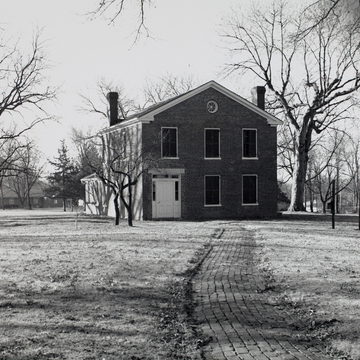You are here
Lucas House (Plum Grove)
Robert Lucas was the first territorial governor of Iowa. He modeled his 1844 house, built on some 80 acres south of Iowa City, on his earlier house, Friendly Grove, in Ohio, where he had served two terms as governor. Plum Grove, a 30-by-30-foot two-story gable-roofed brick house, is a classic example of the Federal architectural tradition continuing with
Writing Credits
If SAH Archipedia has been useful to you, please consider supporting it.
SAH Archipedia tells the story of the United States through its buildings, landscapes, and cities. This freely available resource empowers the public with authoritative knowledge that deepens their understanding and appreciation of the built environment. But the Society of Architectural Historians, which created SAH Archipedia with University of Virginia Press, needs your support to maintain the high-caliber research, writing, photography, cartography, editing, design, and programming that make SAH Archipedia a trusted online resource available to all who value the history of place, heritage tourism, and learning.














